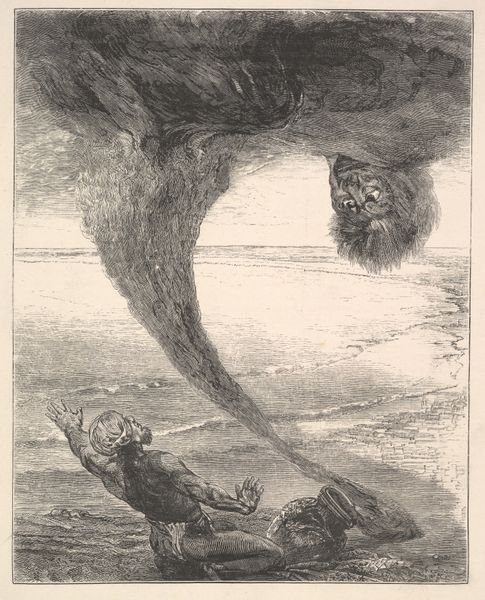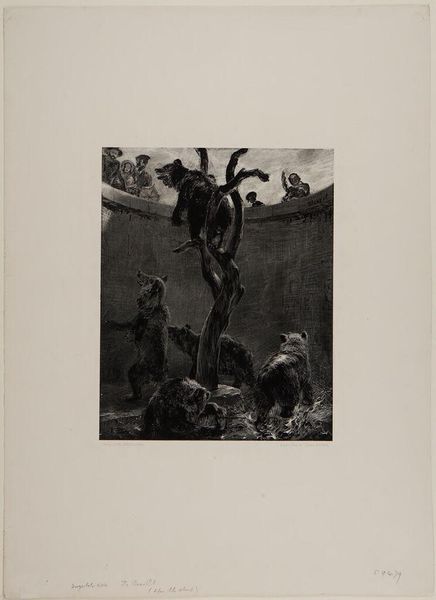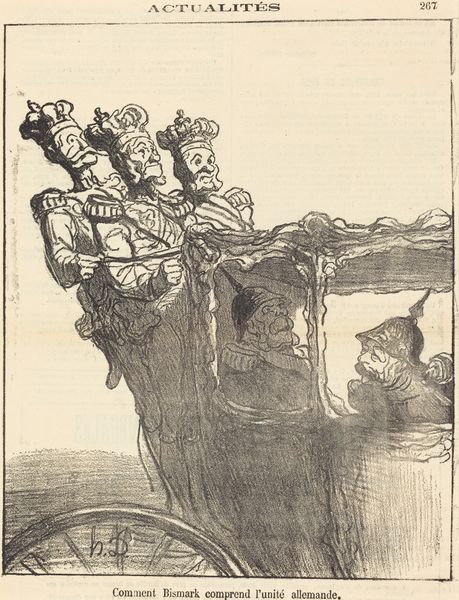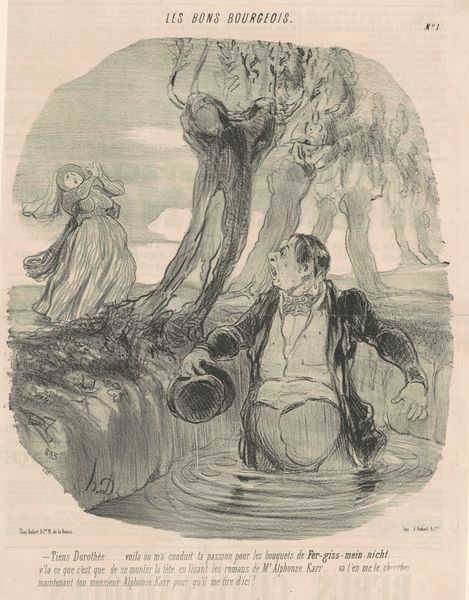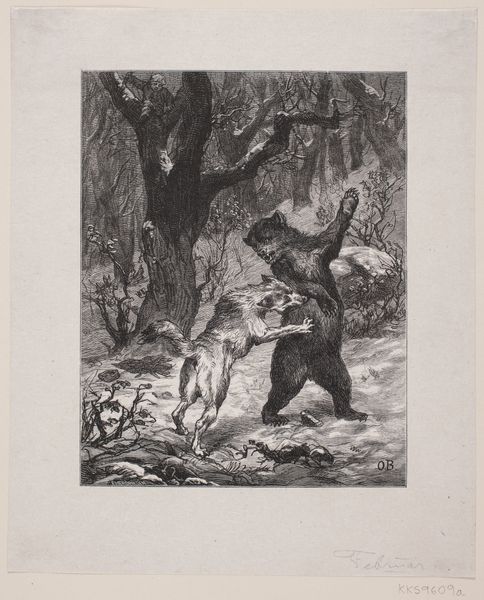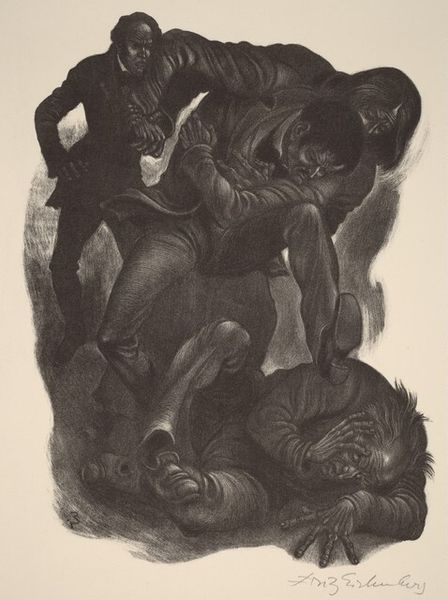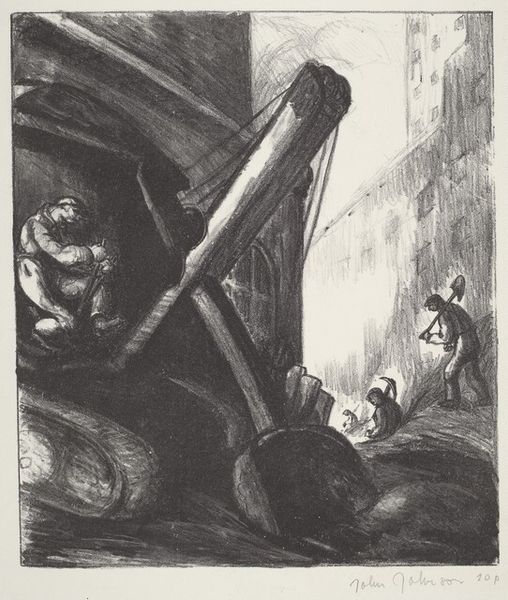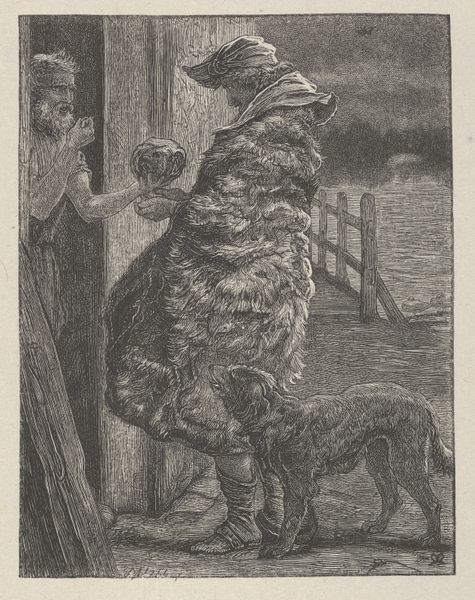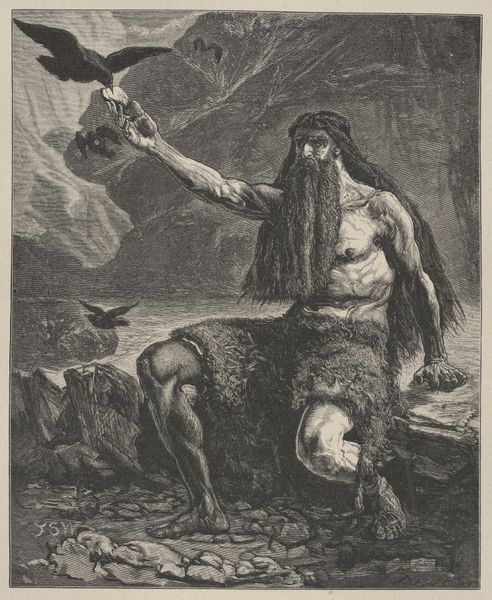
Der Bärenzwinger im zoologischen Garten (The Bear Pit in the Zoological Gardens) 1851
0:00
0:00
drawing, print, woodblock-print, woodcut
#
pencil drawn
#
drawing
#
toned paper
#
animal
# print
#
pencil sketch
#
landscape
#
charcoal drawing
#
pencil drawing
#
woodblock-print
#
woodcut
#
genre-painting
#
realism
Dimensions: image: 24.8 × 19.6 cm (9 3/4 × 7 11/16 in.) sheet: 44.3 × 35.9 cm (17 7/16 × 14 1/8 in.)
Copyright: National Gallery of Art: CC0 1.0
Editor: Here we have Adolph Menzel’s "The Bear Pit in the Zoological Gardens," from 1851, created with woodcut. There's a real sense of confinement in the pit, contrasting with the apparent freedom of the spectators above. What strikes you about this work? Curator: I see a stark visual representation of power dynamics. Consider the bear, a creature of immense strength, now reduced to spectacle. The pit itself becomes a potent symbol. What does enclosure represent historically? Editor: Loss of freedom, oppression… even something like the panopticon comes to mind. The spectators become complicit, reinforcing this unequal gaze. Curator: Precisely. Menzel, consciously or not, taps into our collective understanding of control. Look closely at the texture achieved through the woodcut. Does it evoke a specific emotional register? Editor: The starkness definitely amplifies the feeling of being trapped and exposed. It’s almost unsettling. Curator: Indeed. Consider too how the tree functions. Is it an element of nature, or merely another instrument within the artificial confines of the pit? Menzel understood how visual elements carry psychological weight, playing on the viewers innate understanding of the animal. The image prompts consideration of mankind’s complex relationships with nature. Editor: It is unsettling how layered the symbolism is! Thank you, it is truly helpful to delve deeper into how this artist might have represented such issues. Curator: It is a pleasure. Now, let's continue our consideration to better clarify further artworks' messages.
Comments
No comments
Be the first to comment and join the conversation on the ultimate creative platform.
